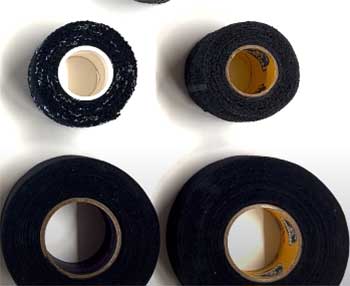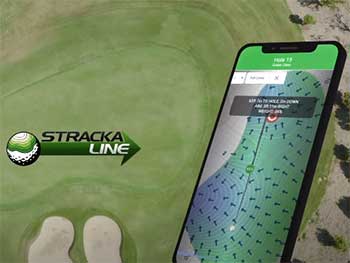Listen up, pickleball fanatics! If you’re serious about upping your game—or just want a reliable practice buddy that won’t flake on you—the Lobster Pickleball Machine is calling your name. I’ve been swinging paddles for years, and trust me, this gadget is a game-changer.
Whether you’re a newbie or a seasoned pro, it’s worth every penny for solo drills and skill-building. In this article, I’ll walk you through my journey with it, break down the pros and cons, share some maintenance hacks, and stack it up against other brands. Ready?
Let’s get rolling—you need this in your life!
My Experience With The Lobster Pickleball Machine
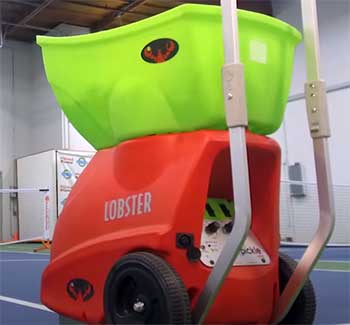
I’ll never forget the day my Lobster Pickleball Machine arrived.
It was my Christmas gift to myself, and I was buzzing with excitement to test it out.
Picture this: I’m unboxing it in my garage, and it’s sleek, compact, and lighter than I expected at just 35 pounds.
I couldn’t wait to haul it to the court and see what it could do.
First time out? Total flop. I flipped the switch, and… nothing. Zilch. I was gutted.
A quick call to Lobster’s customer service revealed a loose wire from shipping—apparently, it happens sometimes.
With their guidance, I popped the panel open, nudged the wire back into place, and bam, we were in business. Lesson learned: always check the basics before panicking.
The real first session was a mixed bag. It was windy as heck, and the balls were flying everywhere but where I wanted them. I grumbled, packed it up, and vowed to try again. Round two, though? Pure magic. The weather was crisp and calm, and I finally got to play with this beast.
I set it up to lob balls at me with some topspin, tweaking the speed to around 40 mph. It was like having a tireless opponent who never misses a beat. I was sprinting, dinking, and smashing for an hour straight, drenched in sweat and grinning like a fool.
As an instructor friend of mine pointed out, it’s a godsend for drills. I started using it to practice my backhand—a weak spot I’ve been dodging forever. The random oscillation kept me on my toes, forcing me to shuffle side to side. I even took it indoors to a racquetball court at the YMCA one rainy day, and it performed like a champ.
Sure, the height gauge kept falling off (annoying as hell—more on that later), and the remote was a bit finicky, but overall? It’s been my trusty sidekick. I’ve logged maybe 10 hours on it so far, and I’m already seeing my footwork sharpen up.
If you’re like me—someone who loves pickleball but doesn’t always have a partner—this thing’s a dream.
Pros of The Lobster Pickleball Machine
I’ve got a lot of love for this machine, so let’s break down why it’s worth your time and cash. Here’s what’s got me hooked.
- Lightweight and Portable
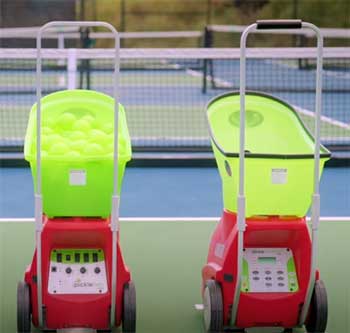
At 35 pounds, this isn’t some clunky monster you’ll dread lugging around.
I’m no bodybuilder, and even I can hoist it into my hatchback without breaking a sweat.
The 8-inch all-terrain wheels are a clutch feature—they glide over gravel, grass, you name it.
I’ve rolled it from my car to the court without a hitch, and the folding handle makes it feel like I’m pulling a suitcase.
For someone like me who’s always on the move, that portability is gold.
- Versatile Settings for All Levels
Whether you’re just starting out or you’re chasing pro-level skills, the Lobster’s got you covered. You can crank the speed from a gentle 10 mph to a blazing 60 mph—perfect for practicing everything from soft dinks to rocket-fast groundstrokes.
The topspin and backspin options?
Chef’s kiss. I’ve been messing with those to mimic real-game scenarios, and it’s helped me read spins better. Plus, the random horizontal oscillation throws balls left, right, and center, so you’re never just standing there waiting for the same shot.
- Solid Battery Life
Here’s the deal: Lobster says it lasts up to 4 hours per charge, and I’ve found that’s pretty spot-on. I’ve squeezed out close to 3.5 hours on a single session without it dying on me.
For most of us, that’s plenty to get a killer workout in. I love that I can set it up, drill for hours, and not worry about scrambling for an outlet mid-session. It’s a relief knowing I won’t be left high and dry when I’m in the zone.
- Big Ball Capacity
The hopper’s advertised at 135 balls, but real talk—it’s more like 100 if you don’t want them spilling out when it starts tossing. Still, that’s a ton of ammo for uninterrupted play.
I load it up with Onix Pure2 balls (they’ve held up best for me), and I can hammer away for ages before I need to scoop them up. Less downtime picking up balls means more time smashing them back—can’t argue with that.
- Awesome Customer Support
I’ve had to ring up Lobster’s support twice now, and both times, they’ve been champs. First was the wire fiasco—fixed in minutes. Second was when I noticed the height gauge wouldn’t stay put; they’re sending me a replacement part, no questions asked.
It’s reassuring to know they’ve got my back if something goes wonky. You don’t always get that with tech these days.
Cons of The Lobster Pickleball Machine
Okay, it’s not all sunshine and rainbows. There are some quirks that’ve tested my patience. Let’s hash them out.
- Remote Issues
The 2-function remote (feed and sweep) sounds cool, right? Well, mine’s a dud half the time. I’ll press it, and nothing happens—or it lags like crazy. I’ve heard from buddies that the fancier remotes are hit-or-miss too.
It’s not a dealbreaker since I can jog over and tweak the settings manually, but it’s a bummer when you’re expecting seamless control from across the court.
- Height Gauge Woes
That dang height gauge falling off drives me up the wall. Every time I adjust the elevation—say, to practice lobs—it pops loose. I’m left guessing the angle, which throws off my groove.
It’s a small piece, but it’s critical, and I shouldn’t have to babysit it. I’ve got a fix coming, but it’s something Lobster needs to nail down in production.
- Ball Residue on Wheels
After a few hours of use, I noticed the drive wheels—the ones that fling the balls—were getting gummed up with plastic bits from the pickleballs. It’s not a huge hassle, but it did start chucking doubles at me once.
A quick sandpaper buff sorted it out (thanks, tech support!), but it’s a heads-up that this machine isn’t totally maintenance-free.
- Awkward Handle Placement
The handle grips are weirdly low, almost tucked under the machine. Lifting it into my SUV feels like a wrestling match sometimes—I’ve got to crouch down and hoist it just right. It’s not a backbreaker, but it’s not as ergonomic as I’d hoped. If you’ve got a high trunk, you might feel the strain too.
- Slow Startup Delay
There’s a lag between flipping the switch and the first ball launching—longer than I’d like. It’s not a sprint to the other side, but it’s enough to make me tap my foot impatiently. I get it’s a safety thing, but when I’m itching to play, those extra seconds feel like forever.
Maintenance Tips For Your Lobster Pickleball Machine
To keep this bad boy humming, you’ve got to give it some TLC. Here’s what I’ve picked up from my time with it.
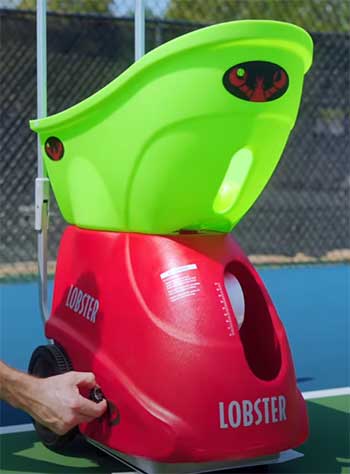
- Clean the Drive Wheels Regularly: Those wheels that propel the balls? They pick up residue like nobody’s business. After about 5 hours of play, I noticed tiny gouges and buildup. Grab some fine-grit sandpaper (I used 220), and gently buff them smooth. Takes 10 minutes tops, and it keeps the throws consistent. Don’t let it sit too long, or you’ll get doubles—or worse, jams.
- Check Connections Before Each Use: Post-shipping wire scare, I’m paranoid about loose bits. Before you hit the court, pop the panel and eyeball the connections. A quick wiggle test can save you a headache. It’s a 2-minute habit that’s kept mine running smooth since that first hiccup.
- Store It Smart: I keep mine in the garage with the hopper flipped down—it’s compact that way and keeps dust off the guts. If you’re not using it for a while, charge the battery to about 50% first. Full charge or dead-empty storage can wear it out faster. Oh, and keep it out of damp spots; moisture’s no friend to electronics.
- Use the Right Balls: Not all pickleballs are created equal. I’ve had a Fuse G1 split on me after three throws—messy and annoying. Onix Pure2 or Franklin X-40s have been my go-tos; they’re durable and don’t shred as fast. Softer balls might wear the wheels quicker, so stick to solid outdoor ones for longevity.
- Charge It Right: The trickle charger’s fine, but it’s slow—think 12 hours if it’s drained. I snagged the 1-Amp Fast Charger, and it cuts that to 6 hours. Don’t leave it plugged in forever, though; overcharging can fry the battery. I unplug mine once the light goes green and call it a day.
Comparison of Lobster Pickleball Machine With Other Brands
Alright, let’s put the Lobster Pickleball Machine in the ring with some worthy contenders: the Slinger Pickleball Machine, the Titan Pickleball Machine, and the Spinshot Pickleball Machine. I’ve sized them up based on my own experience and chatter from other players.
Here’s how they stack up, head-to-head, in a way that’ll help you pick your champ.
- Lobster Vs. Slinger Pickleball Machine
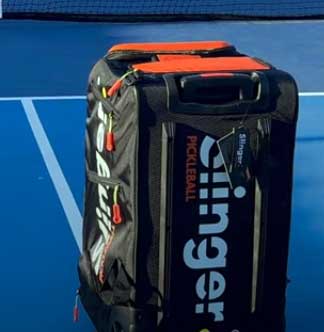
The Slinger’s the budget darling at around $799, and I get the hype—it’s a sling bag you can toss over your shoulder, weighing just 33 pounds.
I love how the Lobster’s 35 pounds and big wheels make it a breeze to roll, but the Slinger’s portability is next-level if you’re schlepping it on foot.
Capacity’s a wash—both hold about 100 balls before they start dribbling out.
The catch?
Slinger tops out at 45 mph with no spin options, while my Lobster cranks up to 60 mph with topspin and backspin.
I’d pick the Lobster for versatility, but if you’re strapped for cash and don’t need fancy spins, Slinger’s a solid play.
- Lobster Vs. Titan Pickleball Machine
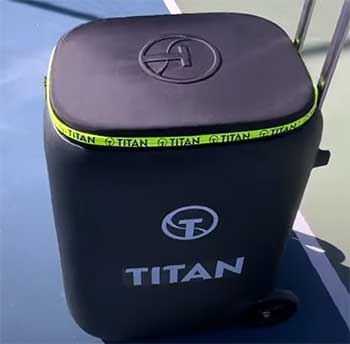
The Titan’s a hefty beast at 48 pounds, and it’s priced around $1,399—more than my Lobster’s $1,139 base model.
I’ll give Titan props for its 150-ball hopper; it blows the Lobster’s 100-ish capacity out of the water.
Battery life’s close—4 hours on the Lobster, 5 on the Titan—but the Titan’s got a slight edge with a smoother remote (mine’s flaky).
Speed-wise, they’re neck-and-neck at 60 mph, though Titan skips oscillation, which I adore on the Lobster for unpredictable drills.
I’d stick with the Lobster for its lighter frame and random throws, but Titan’s a tank if you want raw power and more balls per load.
- Lobster Vs. Spinshot Pickleball Machine
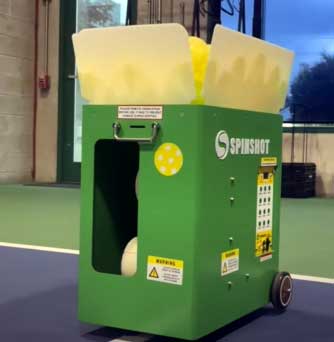
Spinshot Pro’s the techy one, clocking in at $1,499 with app control that makes me jealous of my manual Lobster dials.
It’s 42 pounds—not as light as my 35-pound Lobster, but manageable.
Both hit 60 mph and offer spin, but Spinshot’s custom drills via app are slick—I’m stuck tweaking knobs and dodging a dodgy remote.
Hopper size is tight—120 balls on Spinshot, 100 on Lobster.
Battery’s where Spinshot shines: 6+ hours versus my 4-hour cap.
I love the Lobster’s simplicity and lower price, but if you’re into gadgets and longer sessions, Spinshot might steal your heart.
Frequently Asked Questions (FAQ)
Lobster claims up to 4 hours, and I’ve found that’s about right. I’ve pushed it to 3.5 hours on a full charge with no issues. If you’re doing light drills, you might stretch it a bit longer, but heavy use at max speed will drain it faster. Get the fast charger if you hate waiting.
Hell yes—if you’re serious about improving. I’ve seen my backhand and footwork level up in weeks, stuff that’d take months with sporadic partners. At $1,139, the Lobster’s an investment, sure, but it’s cheaper than endless lessons. If you play casually, though, maybe skip it and save the cash.
The Pickleball Tutor Spin’s your best bet under $1,000. It’s basic—125 balls, 60 mph, no fancy spin—but it gets the job done. I’d still spring for the Lobster if you can swing it; the extra features like spin and oscillation are worth the jump to $1,139.
It’s the souped-up version of the base model I’ve got. Think 6 pre-loaded drills, fully random oscillation, and speeds up to 65 mph. It’s heavier at 44 pounds and holds 125 balls, with a battery life of 6-8 hours. Costs more—around $1,600—but it’s a beast for advanced players or instructors.
Conclusion: Get Your Hands ON A Lobster Pickleball Machine Now!
Alright, folks, here’s the bottom line: the Lobster Pickleball Machine is a must-have if you’re ready to take your game seriously. I’ve sweated it out with this thing, and despite a few quirks, it’s transformed how I practice.
Portable, versatile, and backed by stellar support, it’s a steal for what it delivers. Don’t sleep on this—grab one, hit the court, and watch your skills soar. You won’t regret it!
